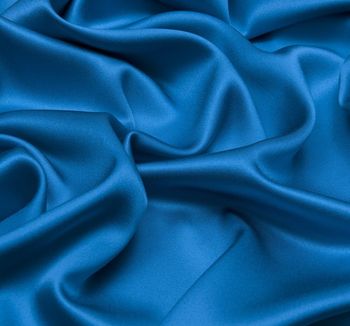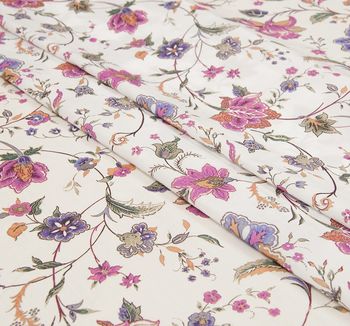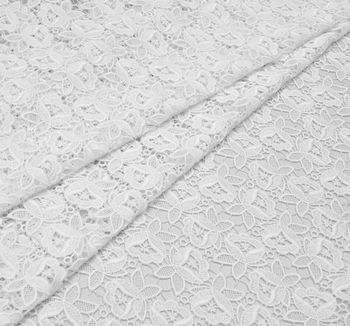Silk is a timelessly trendy natural fabric woven from the cocoons of silk worms. The world’s most famous fashion brands regularly apply it for various men’s and women’s outfits earning the admiration of the audience.
Organza Fabrics
Organza fabric is a lightweight, plain weave material with a crisp hand. It has an outstanding drape and is often used by tailors to create dresses and skirts with volume. Organza is also a very strong fabric, so do not be tricked by its sheer look.
Organza is traditionally made from silk. Its cotton variety is called organdy, and it has similar properties to organza. Nowadays, you can find all kinds of organza fabric, both natural and synthetic. An everybody’s favourite for evening and wedding gowns, this stiff material has a subtle sheen.
Characteristics
Organza fabric has a stiff and wiry finish, because it is made with highly twisted filament yarns. It was brought to Europe from the East in the XVIII century and has been in fashion ever since. The most luxurious type of organza was woven with silk fibers and cost a bundle, so no wonder only the nobility could afford to wear it.
In most cases, silk organza was too expensive to sew a whole dress, but it was a popular material for decoration. As time passed, textile weavers learnt to make organza using viscose and synthetic fibers, which made the sheer fabric cheaper and more wide-spread.
So, how do you know you deal with organza fabric? It is:
- Sheer,
- Smooth,
- Wiry,
- Crisp,
- Slippery,
- Has a sculptured drape.
On average, organza weighs between 20 and 50 g/m2. It tends to crease a lot, but one can restore it to the former glory by steaming or ironing.
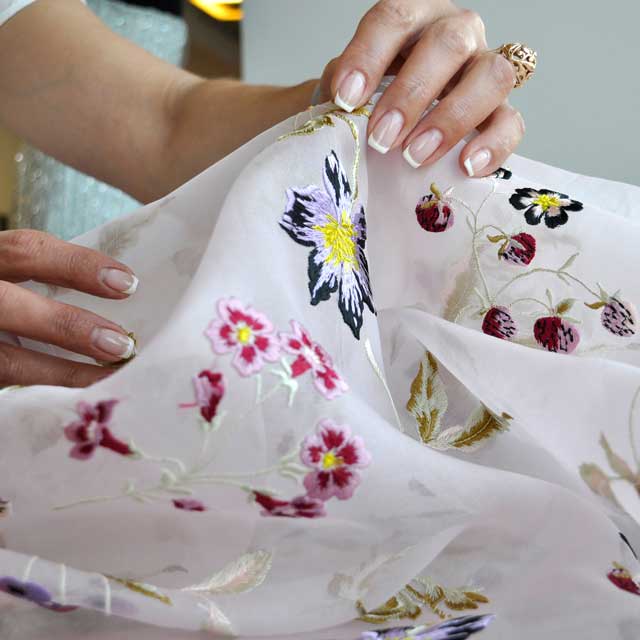
The Difference between Chiffon, Organza & Tulle
There is a whole bunch of sheer fabrics that might seem alike to the untrained eye. However, there are no two exact matches. Let’s find out how to tell a difference between oh so similar materials.
The two fabrics often mistaken for each other are organza and chiffon. Both are delicate cloths that can be made of various fibers, from pure silk to synthetic yarns. Both are transparent and weigh almost nothing. Both can be solid and printed. These two gauzy cloths create a sensational feeling of airiness no matter what they are sewn into, and this is one of the reasons we use them to make summer apparel and bridal wear.
So, what sets them apart?
|
Organza |
Chiffon |
|
|---|---|---|
|
Appearance |
Sheer |
Sheer or semi-sheer |
|
Texture |
Smooth, crisp |
Soft or slightly rough |
|
Drape |
Stiff |
Soft |
|
Sheen |
Yes |
No |
|
Stability |
Creases easily |
More crease-resistant |
|
Uses |
To give structure to the look |
To create a flowing look |
The main difference between organza and chiffon is in the way they drape. Silk chiffon fabric is very flowy, while organza has a stiffer drape, and it can help hold the more delicate fabrics when placed underneath for support.
Some of you might be confused over organza and tulle. Though both fabrics are lightweight and see-through, their structure is different. If you look closer, you’ll notice that tulle is like netting and resembles a hexagonal mesh. Organza, on the contrary, is a plain weave fabric, so there’s barely any space between two weaving threads in the weft and in the warp.
Are ‘organza’ and ‘organdy’ synonyms? In fact, they are. The only difference between them is composition: organza can be made of silk, viscose, rayon or synthetic fibers, while organdy is always made of cotton.
Many Types of Organza Fabric
Organza is produced in a wide range of colors and prints. Its amazing ability to boost volume and soften the silhouette encouraged fabric manufacturers to create all kinds of organza to satisfy every need.
Ready to be amazed? Here they are!
- Embroidered organza (decorated with beads, rhinestones, sequins, satin stitch and much more).
- Crystal organza (very shimmering).
- Mirror organza (highly reflective).
- Shot organza/Changeant organza (different colored yarns in the warp and weft).
- Crushed organza (crinkled).
- Satin organza (one face is lustrous satin).
Many designers and sewing experts use printed organza to make eye-catching items for a woman’s wardrobe. It makes a nice duo with solid organza, as well as with other fabrics, such as shiny satin or smooth taffeta.
One of the surefire ways to stand out in the crowd is to sew a dress made of embroidered fabric. Such organza is usually expensive, and there’s a simple reason for that: this lightweight fabric is very slippery and light as air, so it's really hard to decorate it without causing damage. One false move, and you risk distorting the cloth! That is why organza is rarely embroidered at home.
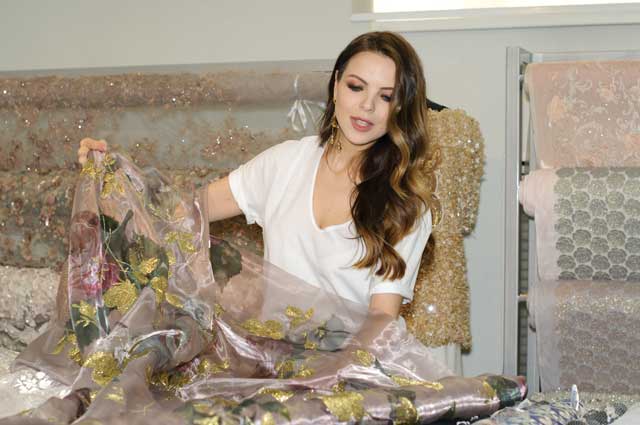
Organza Fabric Use
Would you like to incorporate organza into your daily sewing routine? This delicate and translucent cloth gives total freedom to a creative mind and can be used in dozens of ways, including innovative ones! What exactly can you make with organza fabric?
Apparel
Delicate garments like airy skirts, full dresses, or loose blouses. You may also combine it with other fabrics or keep it for sleeves and panels. Plus, organza is a second-to-none material for underskirts.
Accessories
Especially for wedding, but also for birthday parties, anniversaries, gala events or simply to accompany your casual look: veils, capes, sashes, bands, organza bracelets.
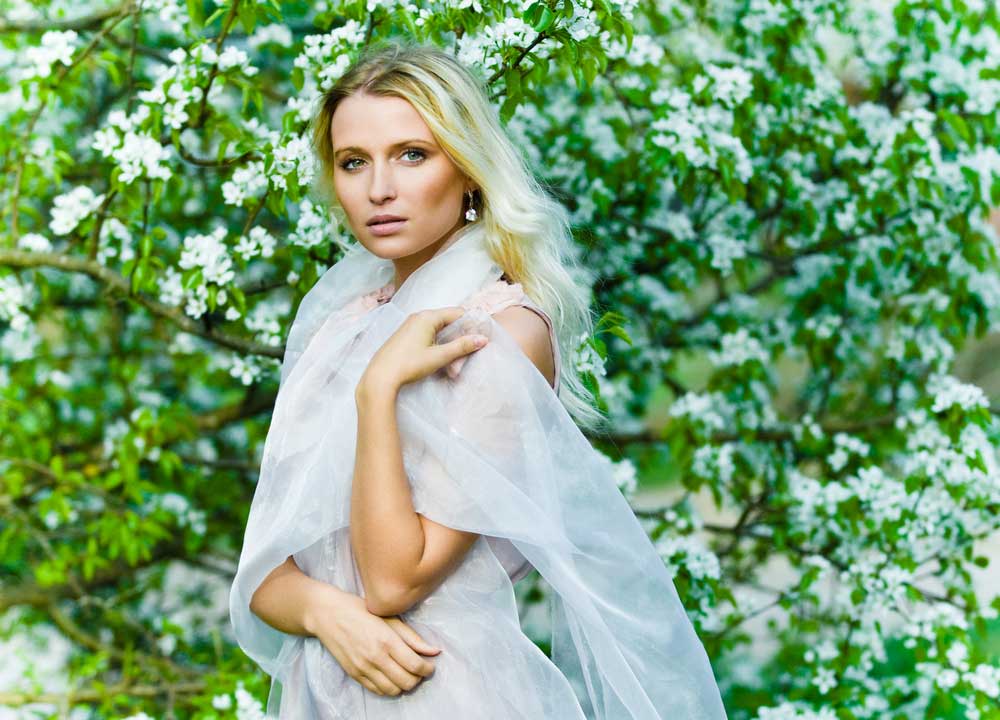
Trimmings
With organza, you can make gorgeous ribbons, flowers, bows and necklaces.
Décor
This sheer material can be used to make curtains, draperies, tablecloths, overlays, chain covers, or present bags.
Sewing with organza fabric takes some practice, since it shifts easily on the table. To keep it in place, one can use fine pins or needles. Like any sheer fabric, it should be stitched once, because needle holes will be visible should a seamstress decide to take a second chance and readjust the seam.
Organza is one of the most popular fabrics when it comes to bridal wear. You can construct a whole wedding ensemble with this sheer cloth alone, or use it give body to your design, e.g. by making an organza underskirt.
Fashion Organza Dresses
Silk organza is a great material for high-end bridal and prom dresses. See-through and lightweight, it is most suitable for a spring/summer season. Since this cloth is known for its structured drape, fashion designers prefer to use it for full dresses where it is next to none. Still, there are no restrictions in the world of haute couture, so expect to see all kinds of shapes created with organza fabric.
Below are some of the most popular dress silhouettes that you can easily construct with this fantastic woven material.
- Full dresses
This type of dress gets its name after the skirt, which is full rather than close-fitting. Organza is perfect for making a ball gown or an A-line dress. You can use several layers of organza to create a full shape, or combine it with chiffon to get a softer drape. Another application includes pleated or ruched organza to accentuate the waistline. We love full dresses because they are suitable for any body shape, whether you’re slim or curvy.
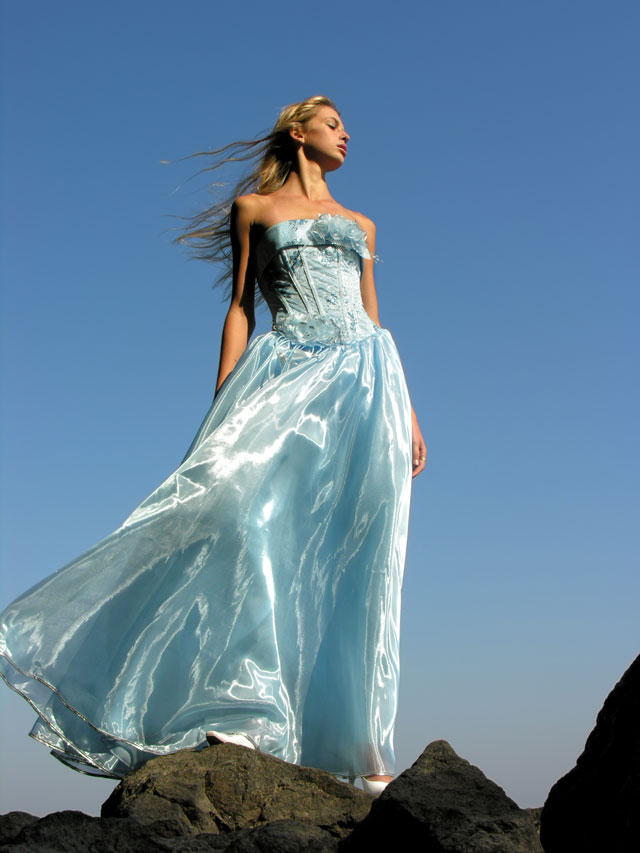
- Sheath dresses
This dress has a narrow shape and is best on slim bodies. Organza is not stretchy, so it is rarely used in sheath dresses. But if you don’t mind a looser shape, it might as well do the trick! Organza layers will soften the silhouette and create an airy sensation. Pink organza fabric will be perfect for a one-of-a-kind prom dress, and red silk organza will make an exquisite evening gown.
- Trumpet dresses
A trumpet dress is close-fitting above the waist and at the hips, and then it flares down like a trumpet. Organza material is a great choice for the bottom part, since it creates volume and accentuates the very shape of the dress. Consider ruffles and ruches, either in the same color or in different shades. You may also create uneven tiers to give more air and lightness to the look.
- Mermaid dresses
A mermaid style dress has a fitted bodice and flares out below the knee. One way to use organza here is to create a multilayer bottom, with lots of organza ruffles and flounces. They will elevate the whole look and add more volume for a more prominent silhouette contrast.
- Midi and tea-length dresses
This kind of apparel has a midi length, so it’s slightly above or below the knee. Organza fabric will make the most flirtatious tea dresses, whether you use it for an entire skirt or as an underlayer. Go for printed floral organza to create summer-inspired looks!
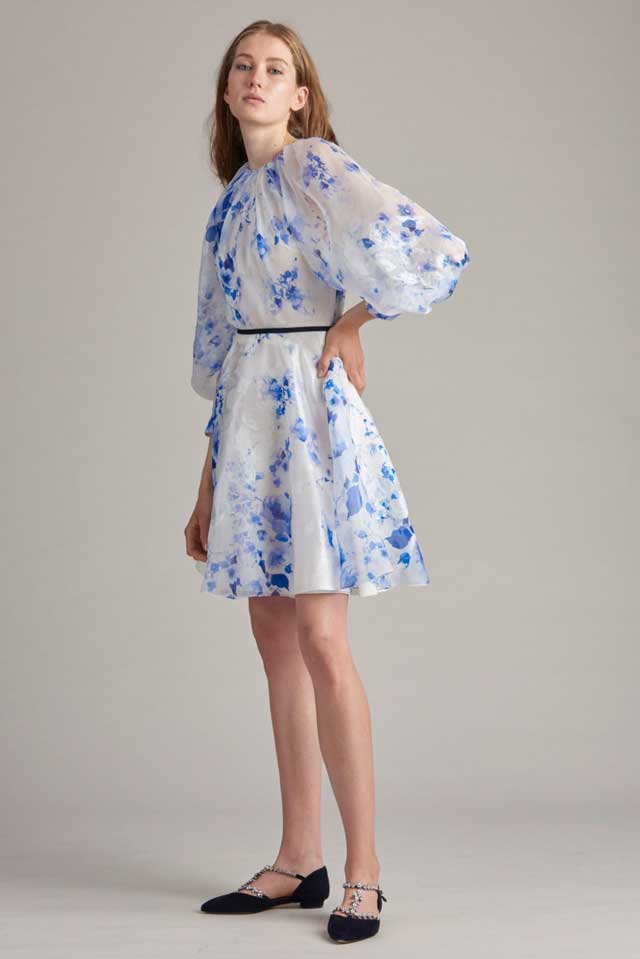
- Mini dresses
This dress length needs no introduction. Way above the knee, it is a popular choice among young girls, but there are a lot of women who don’t mind sporting it on the occasion. Again, organza fabric will show its best side in a fuller shape.
- H-line dresses
This silhouette introduced by Christian Dior means a relatively straight cut. There’s no accent on the waistline, and the loose shape gives you freedom in the choice of fabrics you may use for your project. So, why not go with some nice stiff silk? Take black organza fabric, for instance, and design a figure-flattering straight dress for a special evening.
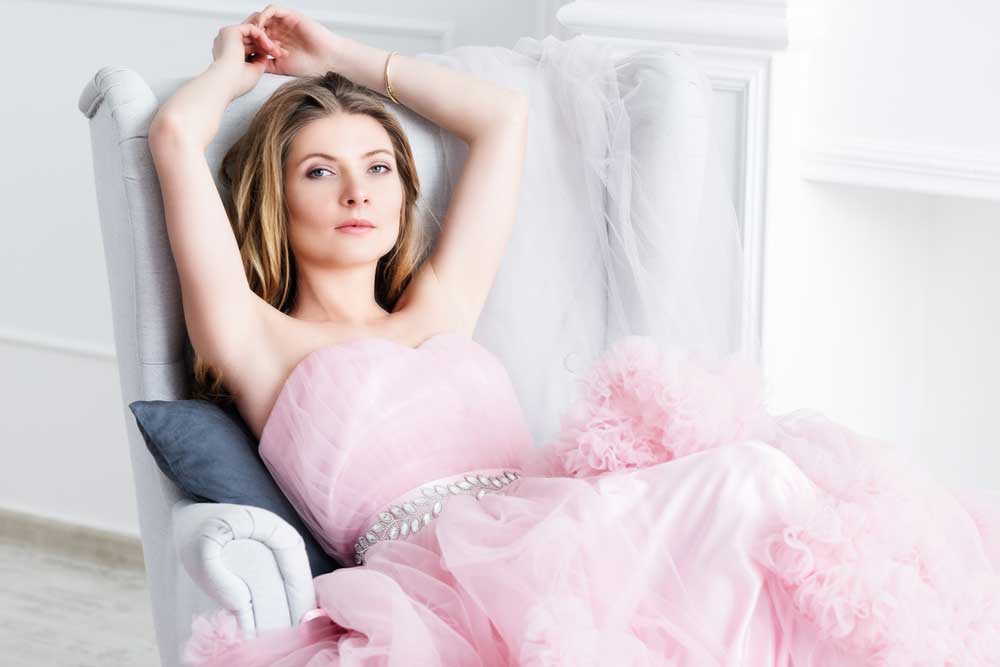
Bridal Organza 2019
Together with chiffon, satin, taffeta and lace, silk organza makes the top ten list of bridal fabrics. The 2019 wedding fashion trends we’ve seen on the catwalks seem to favour this sheer cloth. Why? Well, what else will give so much body to your gown without adding any extra weight?
Straight from the runways, some of the ideas worth exploring.
- A mermaid gown with a halter neck and an organza skirt, embroidered with floral appliques.
- A princess dress with a sweetheart neckline encrusted with beads, a pleated organza band and an A-line organza skirt.
- A high-neck long sleeve dress with a full skirt made of embroidered organza.
- An illusion back dress with buttons and floral appliques.
- A strapless A-line dress made of floral organza.
- A sheath gown with train made of illusion organza.
- A fit-and-flare dress with spaghetti straps, with a full ruffled organza skirt.
- A V-neck sleeveless gown with an organza skirt decorated with sequins and lace appliques.
- An organza ball gown with asymmetrical draping and flounces.
Honestly, we could go on forever! If there was an encyclopedia of bridal wear, organza wedding dresses would probably need a whole volume. The traditional color palette calls for ivory or white organza fabrics, but printed and colored versions are a fun twist, too.
Remember, you don’t have to go all the way down with it. Just keep it as an accent to draw attention to your waist and support the theme of the wedding. Gold organza fabric would be a hit!
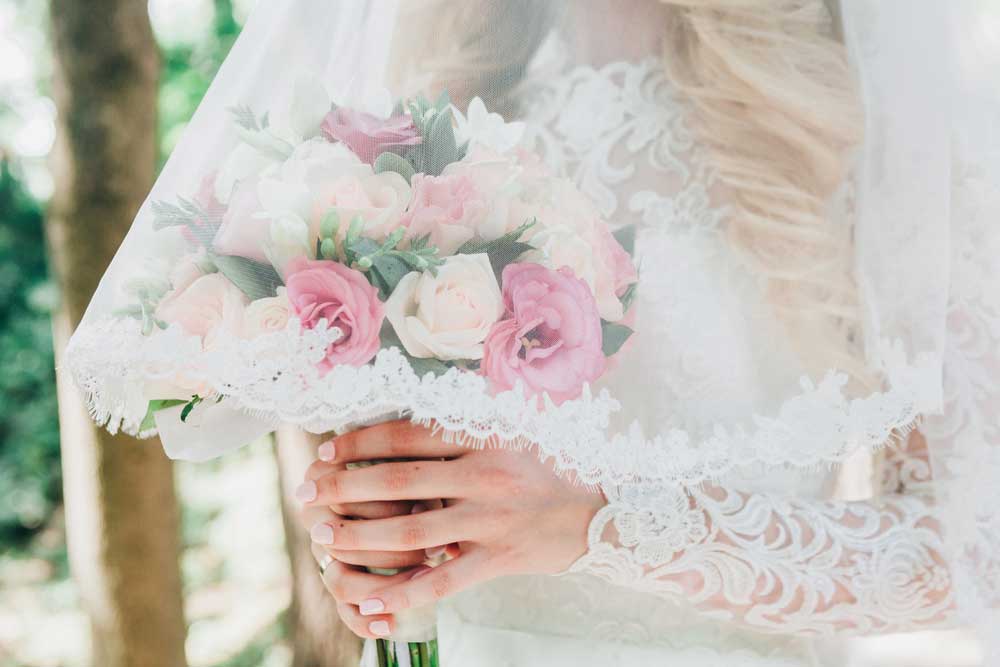
How to Care for Your Organza Dress?
Some people might think that organza is too gentle and hard to take care of. If you still doubt whether to buy organza for your next dress, we are going to encourage you! Organza is a fashion fabric that does not step off the runways. Celebrities and Hollywood stars are also in love with this delicate cloth, and they don’t mind wearing it once in a while.
There are a few simple tips you need to remember to keep your organza as beautiful as the day you bought it.
- Washing.
Many types of organza fabric can be hand-washed with a mild detergent. Silk organza, however, prefers dry-cleaning. If you decide to wash it at home, make sure you separate it from other garments that have buttons or zippers. Organza is delicate, after all, so we should not risk catching on it.
- Drying.
The best way to dry organza clothing is to let it lay flat, away from direct sunlight or heat. It also helps eliminate creases.
- Ironing/Steaming.
Use a steam iron to get rid of wrinkles, or put a regular iron on a low setting and gently press your organza garment using a layer of protection – what we call a press cloth. Still, out of these two options, we recommend going with a steam iron to avoid any damage risks. You can also hang your organza dress in the bathroom and let the steam do the work.
- Storing.
Organza garments are usually stored folded. If you use a hanger, be careful not to put your item next to any clothes with buttons, closures or beads.
Follow these recommendations to make the most of your organza clothes and keep the colors in. Despite its sheer nature, this fabric can serve you for ages, and since it’s always in fashion you can wear it for a surprisingly long period of time.
Organza Fabric Collection at Tissura.com
Tissura offers top quality organza cloths produced by some of the most reputable manufacturers, all based in Europe. Thanks to the Internet, today you can buy organza fabric online no matter where you live. These luxury fabrics from Italy, France, Austria and Switzerland are just one click away!
Below is the list of the European manufacturers specializing in solid and printed organza fabrics.
- Ruffo Coli (Italy)
- Belinac (France)
- Binda (Italy)
- Sfate & Combier (France)
- Carnet (Italy)
These factories produce high-quality materials, including jacquard, fil coupe, cloque and metallic organza.
If you need something really special for your sewing project, look for the following names:
- Jakob Schlaepfer (Switzerland)
- HOH (Austria)
- Forster Rohner (Switzerland)
- Aldo Bianchi (Italy)
These prominent organza suppliers offer some of the most breathtaking designs, each one a real catch! Browse our exclusive organza selections to see the sheer fabrics embroidered with beads, pearls, sequins and Swarovski crystals; one-in-a-million metallic organza; laser-cut, hologram and shot effect organza, as well as degrade patterns for a red-carpet style outfit.
Silk Organza fabric, 120 € (147 US$) per one running metre;
Silk Organza fabric, 103 € (127 US$) per one running metre;
Silk organza fabric, 96 € (118 US$) per one running metre;
Silk organza fabric, 253 € (268 US$) per one running metre
How to stay cool on a hot summer day? Wear fabrics built for the heat. Cotton, linen, viscose, silk – there are dozens of summer-friendly materials you can choose for your wardrobe. The best fabric to opt for when the temperature rises should be breathable and comfortable.
The wedding dress is one of the most important clothing items a woman gets to choose in her lifetime. It can be made of silk or cotton, lace or tulle, be strewn with sequins or embroidered with beads.
.jpg)
.jpg)
.jpg)
.jpg)
